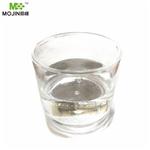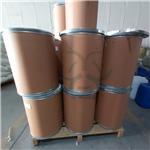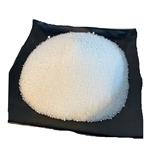Shellac
| Melting point | 115-120° |
|---|---|
| Density | 1.035-1.140 |
| storage temp. | 2-8°C |
| solubility | Practically insoluble in water, gives a more or less opalescent solution (wax containing shellac and bleached shellac) or a clear solution (dewaxed shellac and bleached, dewaxed shellac) in anhydrous ethanol. When warmed it is sparingly soluble or soluble in alkaline solutions. |
| Odor | mild woody |
| Dielectric constant | 2.0(Ambient) |
| Stability | Stable. Incompatible with strong oxidizing agents. |
| CAS DataBase Reference | 9000-59-3 |
| Substances Added to Food (formerly EAFUS) | SHELLAC, PURIFIED |
| FDA 21 CFR | 175.105; 175.300 |
| EWG's Food Scores | 1 |
| FDA UNII | 46N107B71O |
| EPA Substance Registry System | Shellac (9000-59-3) |
SAFETY
Risk and Safety Statements
| Symbol(GHS) |  GHS07 |
|---|---|
| Signal word | Warning |
| Hazard statements | H315-H335-H302-H319 |
| Precautionary statements | P264-P280-P302+P352-P321-P332+P313-P362-P264-P280-P305+P351+P338-P337+P313P-P264-P270-P301+P312-P330-P501 |
| WGK Germany | 3 |
| HS Code | 1301900190 |
Shellac price More Price(4)
| Manufacturer | Product number | Product description | CAS number | Packaging | Price | Updated | Buy |
|---|---|---|---|---|---|---|---|
| Sigma-Aldrich | 1600314 | Shellac wax-free | 9000-59-3 | 100mg | $224 | 2024-03-01 | Buy |
| Sigma-Aldrich | 1600303 | Shellac wax-free | 9000-59-3 | 1g | $497 | 2024-03-01 | Buy |
| TRC | S282995 | Shellac | 9000-59-3 | 50g | $350 | 2021-12-16 | Buy |
| American Custom Chemicals Corporation | LIP0002745 | LACCA 95.00% | 9000-59-3 | 5MG | $504.35 | 2021-12-16 | Buy |
Shellac Chemical Properties,Uses,Production
Chemical Properties
solid
Chemical Properties
Shellac is a natural resin that may be obtained in a variety of colors ranging from light yellow to dark red in the form of hard, brittle flakes with or without wax, depending on the refining process; see Sections 4 and 13. The different types of shellac include bleached shellac, bleached dewaxed shellac, dewaxed and decolorized shellac, dewaxed flake shellac, dewaxed orange shellac, dewaxed shellac, orange shellac, purified shellac, refined bleached shellac, regular bleached shellac, regular waxy shellac, wax-containing shellac, and white shellac. The flakes may be crushed or milled to a coarse or fine powder. Bleached shellac is supplied as a coarse offwhite powder. Shellac is tasteless and may have a faint odor. The typical odor of shellac is the result of a complex fragrance system.
Uses
Shellac is used in the preparation of cosmetic products such as mascara and acrylic nail products. It is also used in the formulation of aqueous-core capsules for riboflavin release.
Uses
Chiefly in lacquers and varnishes; also in manufacture of buttons, grinding wheels, sealing wax, cements, inks, phonograph records, paper; for stiffening hats; in electrical machines; coating confections and medicinal tablets; finishing leather.
Definition
shellac: A hard resin produced as asecretion by a plant parasite, thesouth-east Asian lac insect Laciferlacca. It is used in sealing wax, varnish(French polish), and electrical insulators.
Production Methods
Shellac or lac is cultivated and refined from lacca, a resinous
secretion produced by the tiny insect Kerria lacca (Kerr) Lindinger
(Coccideae), formerly Laccifer lacca (Kerr). The insects are parasitic
on certain trees, mainly in India. In Thailand and South China, the
resin is secreted by another species, Laccifer chinensis (Madihassan)
on different trees. The insects pierce through the bark of the tree
and transform the sap into a natural polyester resin, called stick lac,which is secreted through the surface of their body. The resin forms
thick encrustations on the smaller branches and twigs, which are
then scraped off the twigs and further processed to produce seed lac,
as it is known at this stage. Seed lac is then refined to become
shellac.
The chemical composition, properties and the color of shellac
depend on the insect or insect strain, and thus the host tree, as well
as the process used for refining. Three very different processes are
used for refining the seed lac to shellac (bleaching, melting, and
solvent extraction), resulting in products with different characteristics
and properties.
Bleaching process Refined bleached or white shellac is obtained
by dissolving seed lac in an aqueous alkaline solution, which is
then filtered, dewaxed, and bleached with sodium hypochlorite
to completely remove the color. However, changes in the
molecular structure and the addition of chlorine substituents
may lead to self-crosslinking and polymerization.
Melting process After melting the seed lac, the highly viscous
molten lac is pressed through a filter and drawn to a thin film.
Once cooled, the film breaks into thin flakes. The shellac wax is
not removed by this process and the color depends on the type of
seed lac used.
Solvent extraction process Solvent extraction is a very gentle
process for refining shellac. The seed lac is dissolved in ethanol,
and wax and impurities are removed by filtration. Activated
carbon is used to produce light-colored grades. After a further
filtration step and the removal of ethanol, the resin is drawn to a
thin film, which breaks into flakes after cooling. The properties
of the final product depend on the type of seed lac used and are
influenced by the processing parameters and the grade of
activated carbon.
PhEur 6.2 and USP32–NF27 define four types of shellac
depending on the refining method, and the JP XV mentions two
types.
The use of the term ‘pharmaceutical grade’ as well as the quality
of the shellac depends on the manufacturer.
Seed lac is mainly produced in India, Thailand and China.
Orange shellac, refined by the melting process, is manufactured by
several companies in India, Thailand and South-East Asia. Bleached
shellac is produced in the USA, Canada, Japan, India, Thailand and
South China. Dewaxed orange shellac is refined by the solvent
extraction process in Germany, Japan and India.
Hazard
(Alcohol solution) Flammable, dangerous fire risk.
Pharmaceutical Applications
Shellac is widely used as a moisture barrier coating for tablets and
pellets due to its low water vapor and oxygen permeability. It has
usually been applied in the form of alcoholic or aqueous solutions
(pharmaceutical glazes). However, due to stability problems with
alcoholic shellac solutions, it has had limited use in the pharmaceutical
industry for modified-release or enteric coatings.
Shellac, particularly novel aqueous shellac solutions, is mainly
used in food products and nutritional supplements. Recent research
results indicate good application properties and chemical stability
of shellac films from aqueous shellac solutions. Aqueous
ammonium shellac solutions, based on dewaxed orange shellac,
do not show the problems exhibited by alcoholic shellac solutions
and are used as an enteric coating for pellets, tablets, soft and hard
gelatine capsules, primarily in nutritional supplements.
Shellac is a primary ingredient of pharmaceutical printing inks
for capsules and tablets, and can be applied as a 40% w/v alcoholic
solution. It has also been used to apply one or two sealing coats to
tablet cores to protect them from moisture before being film- or
sugar-coated.
Other applications of shellac are the coating or encapsulation of
powders or granules, e.g. in probiotics. Prior to the introduction of
film coating, a combination of shellac, cetostearyl alcohol and
stearic acid was used as an enteric coating. In cosmetics, shellac is
used in hairsprays, mascara and lipstick formulations. Aqueous
shellac solutions are also used for colonic drug delivery.
Safety
Shellac is used in oral pharmaceutical formulations, food products, and cosmetics. It is generally regarded as an essentially nonirritant and nontoxic material at the levels employed as an excipient.
storage
After long periods of storage, shellac becomes less readily soluble in
alcohol, less fluid on heating, and darker in color.
Shellac should be stored in a well-closed container at temperatures
below 15°C. Wax-containing grades should be mixed before
use to ensure uniform distribution of the wax. Orange and dewaxed
orange shellac have a shelf-life of 1 to 2 years. The shelf-life of
bleached shellac is approximately 6 months.
Incompatibilities
Shellac is chemically reactive with aqueous alkalis, organic bases, alcohols, and agents that esterify carboxyl groups. Therefore, shellac should be used with caution in the presence of such compounds.
Regulatory Status
Accepted as a food additive in the USA, Europe, and Japan. Included in the FDA Inactive Ingredients Database (oral capsules and tablets). Included in nonparenteral medicines (oral tablets and capsules, often in printing ink formulations) licensed in the UK. Included in the Canadian List of Acceptable Non-medicinal Ingredients.
Shellac Preparation Products And Raw materials
Raw materials
Preparation Products
| Supplier | Tel | Country | ProdList | Advantage | |
|---|---|---|---|---|---|
| Hebei Mojin Biotechnology Co., Ltd | +8613288715578 | sales@hbmojin.com | China | 12456 | 58 |
| Henan Tianfu Chemical Co.,Ltd. | +86-0371-55170693 +86-19937530512 | info@tianfuchem.com | China | 21691 | 55 |
| Shandong chuangyingchemical Co., Ltd. | 18853181302 | sale@chuangyingchem.com | CHINA | 5909 | 58 |
| Chongqing Chemdad Co., Ltd | +86-023-61398051 +8613650506873 | sales@chemdad.com | China | 39916 | 58 |
| career henan chemical co | +86-0371-86658258 15093356674; | factory@coreychem.com | China | 29826 | 58 |
| Shaanxi Dideu Medichem Co. Ltd | +86-29-87569265 +86-18612256290 | 1056@dideu.com | China | 3581 | 58 |
| Hefei TNJ Chemical Industry Co.,Ltd. | 0551-65418671 | sales@tnjchem.com | China | 34572 | 58 |
| ANHUI WITOP BIOTECH CO., LTD | +8615255079626 | eric@witopchemical.com | China | 23556 | 58 |
| Dideu Industries Group Limited | +86-29-89586680 +86-15129568250 | 1026@dideu.com | China | 29220 | 58 |
| Baoji Guokang Healthchem co.,ltd | +8615604608665 15604608665 | dominicguo@gk-bio.com | CHINA | 9427 | 58 |
Related Qustion
- Q:What is Shellac
- A:Shellac is a brittle or flaky secretion produced by the lac insect Tachardia lacca, commonly found in the rainforests of South....
- Jan 10,2024
View Lastest Price from Shellac manufacturers
| Image | Update time | Product | Price | Min. Order | Purity | Supply Ability | Manufacturer | |
|---|---|---|---|---|---|---|---|---|
 |
2023-09-20 | Shellac
9000-59-3
|
US $0.00 / KG | 1KG | 99% | 50000KG/month | Hebei Mojin Biotechnology Co., Ltd | |
 |
2023-09-06 | Shellac
9000-59-3
|
US $0.00-0.00 / KG | 1KG | 99% | 500000kg | Hebei Guanlang Biotechnology Co., Ltd. | |
 |
2023-05-27 | Shellac
9000-59-3
|
US $10.00 / kg | 1kg | 99.99% | 50000tons | Henan Bao Enluo International TradeCo.,LTD |
9000-59-3(Shellac)Related Search:
1of4




